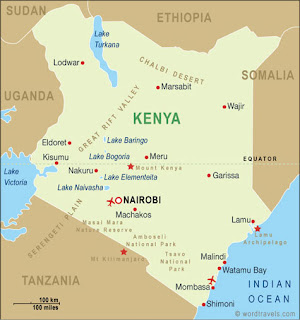Somalia has had no central government since 1991 and that
has led to displacement of many people, internally and externally. Since 2006,
there has been renewed armed conflict in the country and with the rise of Al
Shabaab, the situation continues to worsen. Displaced Somalis have fled to neighbouring
countries, Kenya and Ethiopia, and are mostly accommodated in the Dadaab (20
years old in 2012) and Bokolmayo refugee camps respectively. Within Somalia,
the Afgooye camp has continued to house fleeing Somalis from Mogadishu, where fighting
is a daily occurrence. But of course other neighbours in the East and Central
Africa region (Tanzania, Uganda, Djibouti, Rwanda, Burundi, Sudan etc) have
also continued to receive many refugees from the country.
Many African countries that have had instabilities have gone
through mediation and conflict resolution processes that have ultimately led to
‘peace’. But with Somalia, it would seems like the classic mediation processes
have continued to fail and many people wonder why this is the case. The Somalia
conflict is a very complex issue and a number of factors have led to the crisis
(the list is not by any chance exhaustive):
1. The clan structure
Most of Somalia is arid and its people have been
pastoralists for centuries. Most of these communities are clan based and ruled
by traditional elders. When Somalia descended into civil war, a huge number of
small arms were seized by different clans and these were used to fight each
other. Also, in the advent of multi-party democracy in the country in the late
60’s, most of the political parties were formed along the clan system. This has
made reconciliation amongst the different clans very difficult.
2. Competition for resources
Since time in memorial, Somali clans (and due to their pastoralist
nature) have clashed over resources (pasture, water and livestock).
Traditionally, these disputes were settled by clan elders but as people moved
into urban areas, the types of resources needed also changed. There was a quick
realisation that whoever controlled government, would control the recruitment
process for government employees, disbursement of foreign aid, and government resources
(Elmi and Barise, 2006). Corruption, use of the military for to solve clan
disputes, political patronage in appointment of government officials soon
became rampant, and the overthrow of President Barre was fuelled majorly by
this.
3. The Ethiopia element
Somalia and Ethiopia have had a long running conflict since
time in memorial. They have both been used by the US and Soviet Union in the
Cold War, have engaged in war over the Ogaden region and other conflicts (in
fact, these two have been at it in 1899-1905, 1964, 1977-1978, 1982,
2006-present). There is no doubt that Ethiopia has provided arms and other
machinery to rebel clans and groups to assist in fighting each further destabilising
Somalia. So long as Ethiopia keeps meddling in the peace process, Somalia may
remain a stateless country for a longer time to come.
4. Warlords and Al Shabaab
Since Somalia exploded, factions led by clan warlords, terrorist
groups (of particular mention, Al Shabaab), proxy armies and other armed groups
have determined to continue intimidating Somali civilians and using violence to
detract from peace. Al Shabaab, for instance, controls the entire of southern
Somalia. These groups are constantly fighting each other for control of
resources and continue to destabilise the country.
Given the above, it is very difficult to claim that any one
solution is required to solve the problem. Many have indeed argued that there
can be no Somalia solution that assumes that Western methods will work without
taking into consideration the root causes of the problem and I would support
this notion.
There can be no peace in Somalia without considerations of
the role of informal groupings i.e. clan systems, and incorporating these in
any peace accord. Maybe a central government in Somalia must be inclusive of
all the clans and perhaps local government should be based on the clan system.
Maybe resources mobilisation and use should take into
consideration the best possible way of making sure that all groupings benefit
from such resources.
Maybe it’s time for Somalis in exile and those at home to focus
on finding a solution to the crisis that is not led by Western powers.
The Chairperson of the Somali expatriate group in South
Africa was interviewed on Africa360 (eNews Channel in South Africa) a couple of
weeks ago and he said that there can be no progress on the implementation of recommendations
from conferences so long as these conferences are held outside Somalia, the
agendas determined by non-Somalis and implementation expected to be done by
Somalis. And he is right, in my opinion.
Reference
- Elmi AA and Barise A (2006) The Somali Conflict: Root causes, obstacles, and peace-building strategies http://www.issafrica.org/pgcontent.php?UID=8319
Further Information
- Wars between the East African neighbors of Ethiopia and Somalia http://www.historyguy.com/ethiopia_somali_wars.html
- Roots of the Crisis (Somalia) http://www.enoughproject.org/conflict_areas/somalia/roots-crisis
- The issues in Somalia http://www.givethemshelter.org/get-involved/the-issues-in-somalia

